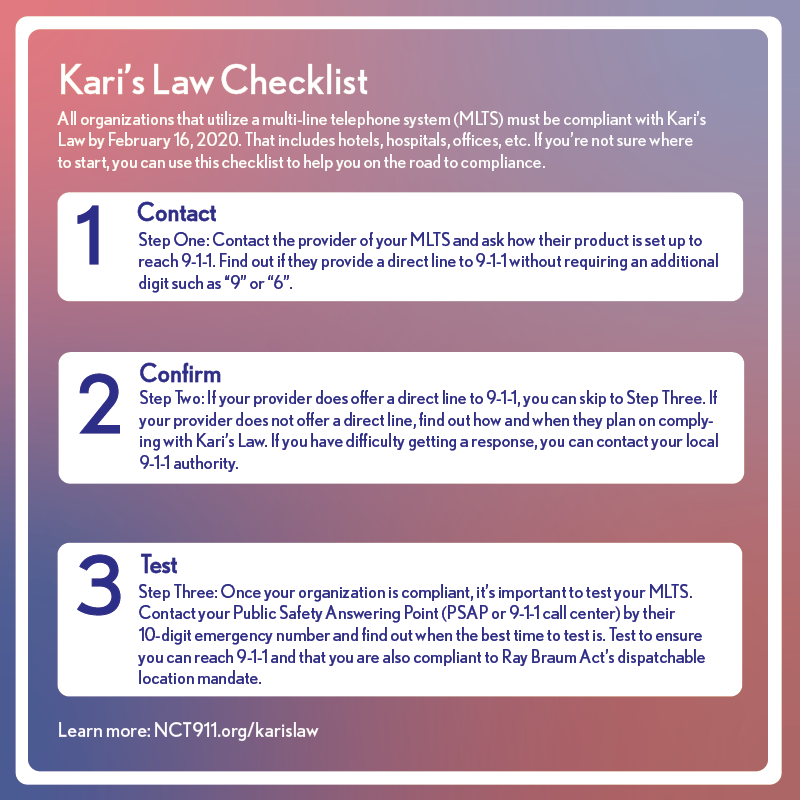
In December of 2013, Kari Hunt Dunn was stabbed to death by her husband in a motel room in east Texas. Her 9-year-old daughter repeatedly tried dialing 9-1-1, but the motel phone required “9” to be dialed to reach any outside line, including emergency services. This event launched Kari’s Law, which requires all organizations or businesses that utilize a multi-line telephone system (MLTS) to provide direct access to 9-1-1. Businesses must become compliant by February 16, 2020, however the federal version of Kari’s Law only applies to MLTS that will be installed after this deadline. If your business is within the state of Texas, however, all MLTS must be compliant or require a waiver.
It is the responsibility of the business or organization utilizing the MLTS to maintain compliance. Texas was the first to pass a state version of this law, and compliance for all Texas organizations (or a waiver detailing why compliance) was required by September 1, 2016. If you’re struggling with next steps and how to become compliant to Kari’s Law, we can help. We’ll discuss what we learned in Texas over the past few years on our journey to compliance.

Find Out Your Current Status
Before you do anything, you have to know where you stand. Contact the provider of your MLTS and ask them how they’re set up to reach 9-1-1. Specific questions you can ask include:
- Do you offer direct access to 9-1-1?
- Is your service compliant with Kari’s Law?
- When did you become compliant? Or when will you become compliant?
- Have you tested your system to ensure direct access to 9-1-1 is available?
If your MLTS provider is already compliant, then your work is almost done. If you can’t get any of these questions answered, you can contact your local 9-1-1 authority for advice on next steps. NCT9-1-1 is your 9-1-1 authority if your business is in our service area, but if you’re not sure who your authority is you can contact your local police or sheriff’s office by their 10-digit emergency number.
Test Your System
If your MLTS provider confirms that their service offers direct access to 9-1-1, you shouldn’t just take their word for it. You need to test it. Contact your local Public Safety Answering Point (PSAP) by their 10-digit emergency number and let them know you’re interested in testing your MLTS and ask what time and day would work best for them. When testing, don’t stop at confirming direct access into 9-1-1. Ensure that your provider also meets the standards of the Ray Baum’s Act and that a dispatchable location is also provided. That would mean a room or officer number is provided to the 9-1-1 telecommunicator, for example.
What Happens If You’re Not Compliant?
February 16 is the deadline for compliance for all organizations across the United States. Those who fail to become and stay compliant may face fees or fines, liability concerns, or, most importantly, are risking the health and safety of its employees and customers.
Kari’s Law was inspired by a horrific event. Don’t wait to meet compliance and risk your place of business becoming the setting of the next one.
Sources
https://docs.fcc.gov/public/attachments/DOC-353961A1.pdf
https://news.avaya.com/us-cp-kari-law-reg